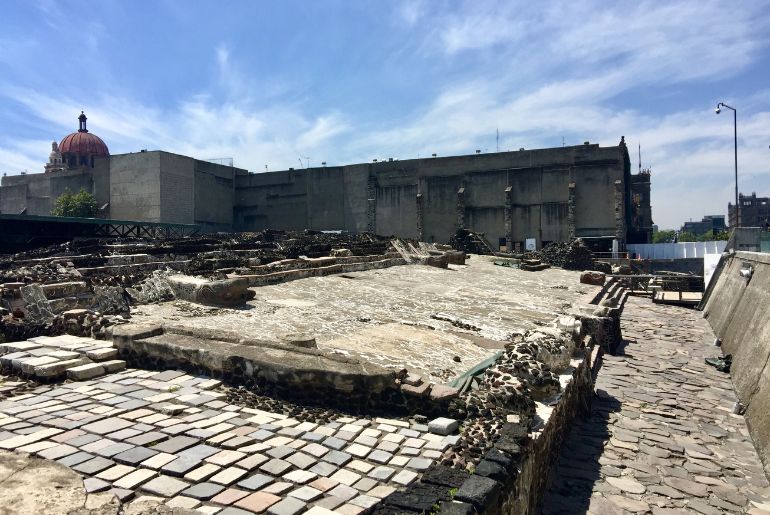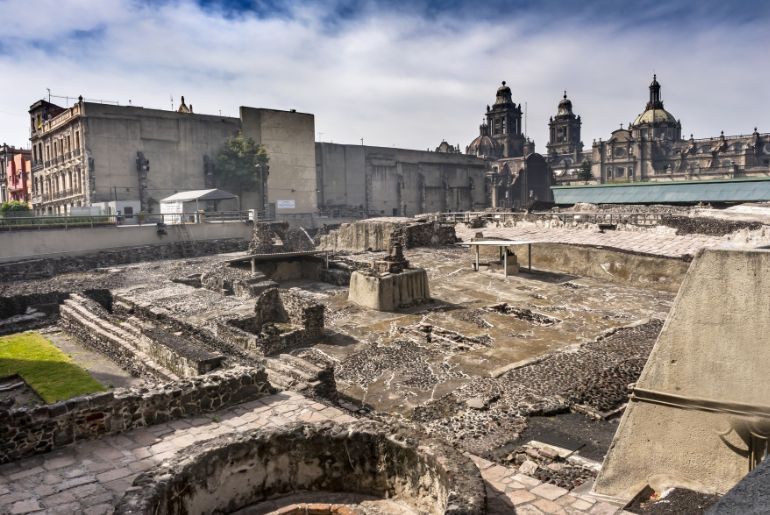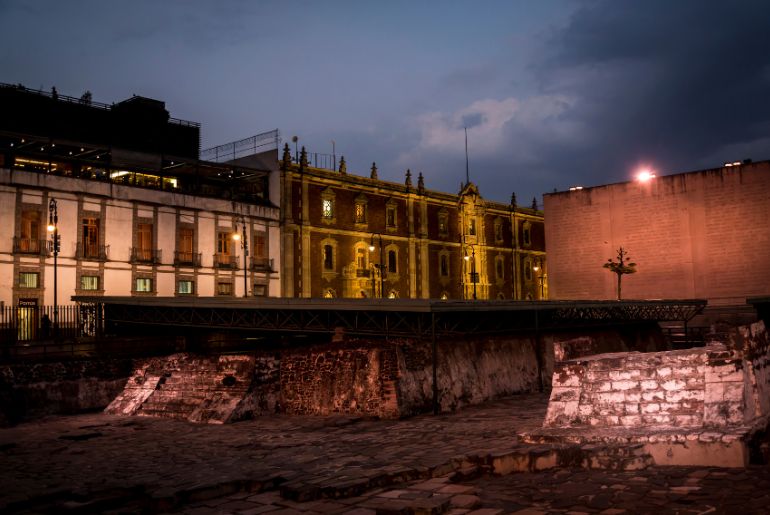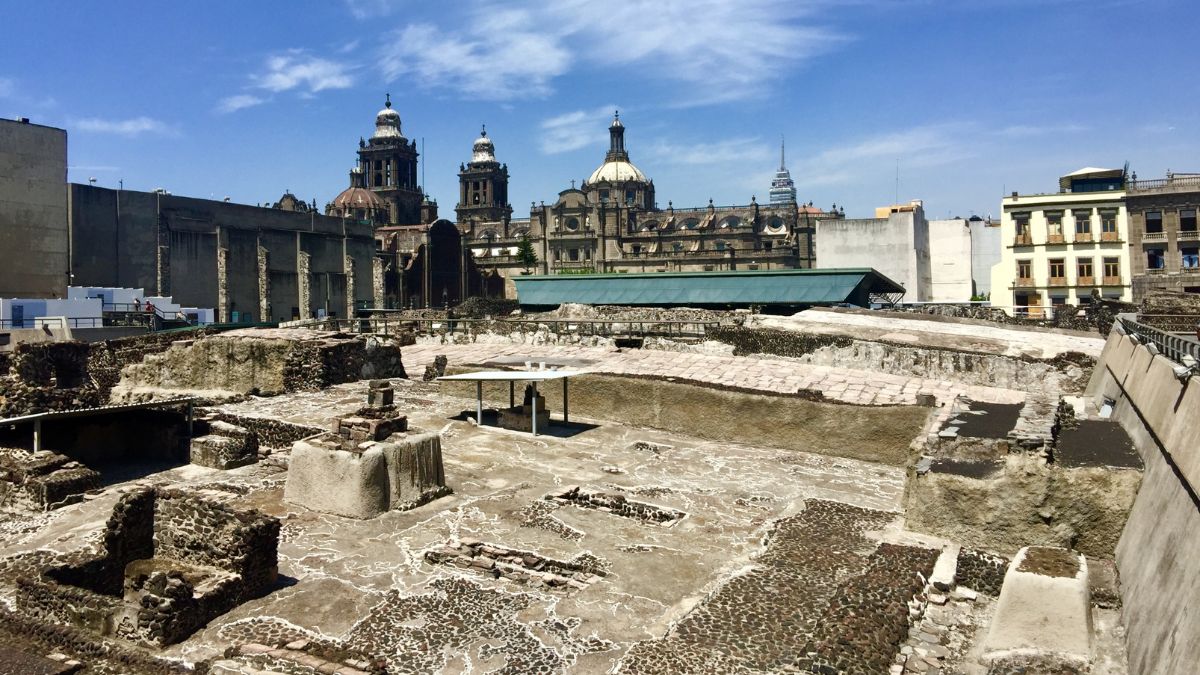Around the start of the 13th century, a nomadic tribe from northern Mexico—likely the Aztecs—arrived in Mesoamerica. Northern Mesoamerica was mostly under the control of the Aztec Empire during its peak. Due to the dominance of the Aztec warriors over their neighbouring states, emperors like Montezuma were able to impose Aztec ideas and religion throughout Mexico. And they made Tenochtitlan the capital of the Aztec Empire!
Tenochtitlan, The Capital Of The Aztec Empire!

Around 1325 C.E., the Aztec or Mexica people constructed Tenochtitlan, the capital of the Aztec Empire. Legend has it that the Mexica, under the guidance of their god Huitzilopochtli, left their homeland of Aztlan to create Tenochtitlan.
When Huitzilopochtli spotted an eagle eating a snake while perched on a cactus, he gave them instructions on where to build. They established Tenochtitlan on the island where they witnessed this scene, which was once part of what was once Lake Texcoco. They saw it as a sign from their deity.
Tenochtitlan, the capital of the Aztecs, was constructed on Lake Texcoco. Chinampas, little artificial islands made above the waterline that were eventually consolidated, were used to increase the area, which was built on two islands. In the end, Tenochtitlan covered an area larger than thirteen square kilometres. Chinampas were protected by causeways that served as dikes to divide freshwater from saltwater and link the island to the mainland.
Tenochtitlan’s layout was symmetrical, with four sectors around the central area and divided by four causeways or waterways. The rulers’ palaces, other gods’ temples, and the Huitzilopochtli temple were all located in this central region. A religious precinct was one of the services provided by each of the four sectors, which were inhabited by artisans such as potters, sculptors, and weavers.
Also Read: Videsh Mein Desh! 8 Restaurants Around The World With Indian Names
Templo Mayor Was The City’s Centre

There were palaces, temples, and public structures in the city’s centre. The ceremonial centre was located inside a walled square. There were roughly forty-five public buildings, such as:
- Quetzalcoatl Temple
- Eagle’s House, which was associated with warriors and the ancient power of rulers
- The platforms for gladiatorial sacrifice
- The Sun Temple, which was dedicated to Tonatiuh
- The Templo Mayor, which was dedicated to the Aztec patron deity Huitzilopochtli
- The Rain God Tlaloc, and a few smaller temples.
The Moctezuma palace, with 100 chambers with private bathrooms for lords and ambassadors of conquered nations and allies, was located outside. The calmecac and the cuicalli, or house of the songs, were also close by. The city was quite well-balanced and the person in charge of municipal planning, the calmimilocatl, had to approve all development.
The Templo Mayor was the name of the city’s centre. Two temples—one dedicated to the sun and battle deity Huitzilopochtli and the other to the god of rain, Tlaloc—stood atop the single complex. The Aztecs perform human sacrifice as well as bloodletting, which involves sacrificing one’s own blood, at the Templo Mayor precinct. However, the Spanish demolished the magnificent Templo Mayor in order to build a cathedral.
Spanish Conquest In 1521

The capital of the Aztecs had about 200,000 residents at the time of the Spanish Conquest in 1521, making it one of the world’s greatest cities. It changed from a tiny village on an island in Lake Texcoco’s western wetlands to the dominant political, commercial, and religious hub of the largest pre-Columbian Mexican empire in less than 200 years.
Due to the acquisition of tribute from conquered territories, Tenochtitlan was a wealthy metropolis. Its towering pyramids, painted in vivid red and blue. And its palaces, painted in brilliant white, were of stunning beauty and impressive scale.
Also Read: Taylor Swift Rents 179 Rooms In Four Seasons Mexico For All The Crew Members Of The Eras Tour
Native visitors as well as conquering Spaniards were impressed by the vibrant, bustling markets that offered an overwhelming variety of meals and luxury items.
Cover Image Courtesy: Canva
For more such snackable content, interesting discoveries and latest updates on food, travel and experiences in your city, download the Curly Tales App. Download HERE.
Good news! We are on WhatsApp! Subscribe to Curly Tales WhatsApp Channel to stay up-to-date with exclusive content and BTS. Join HERE.
First Published: December 29, 2023 7:09 PM



